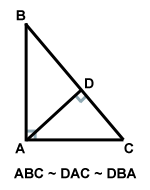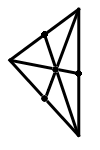Please wait while we process your payment
If you don't see it, please check your spam folder. Sometimes it can end up there.
If you don't see it, please check your spam folder. Sometimes it can end up there.
Please wait while we process your payment
Get instant, ad-free access to our grade-boosting study tools with a 7-day free trial!
Learn more



This site is protected by reCAPTCHA and the Google Privacy Policy and Terms of Service apply.
Create Account
Select Plan
Payment Info
Start 7-Day Free Trial!

Annual
2-49 accounts
$22.49/year + tax
50-99 accounts
$20.99/year + tax
Select Quantity
Price per seat
$29.99 $--.--
Subtotal
$-.--
Want 100 or more? Request a customized plan
You could save over 50%
by choosing an Annual Plan!

SAVE OVER 50%
compared to the monthly price!
| Focused-studying | ||
| PLUS Study Tools | ||
| AP® Test Prep PLUS | ||
| My PLUS Activity | ||
$22.49/month + tax
Save 25%
on 2-49 accounts
$20.99/month + tax
Save 30%
on 50-99 accounts
| Focused-studying | ||
| PLUS Study Tools | ||
| AP® Test Prep PLUS | ||
| My PLUS Activity | ||
No Fear provides access to Shakespeare for students who normally couldn’t (or wouldn’t) read his plays. It’s also a very useful tool when trying to explain Shakespeare’s wordplay!
Erika M.
I tutor high school students in a variety of subjects. Having access to the literature translations helps me to stay informed about the various assignments. Your summaries and translations are invaluable.
Kathy B.
Teaching Shakespeare to today's generation can be challenging. No Fear helps a ton with understanding the crux of the text.
Kay H.
No Fear provides access to Shakespeare for students who normally couldn’t (or wouldn’t) read his plays. It’s also a very useful tool when trying to explain Shakespeare’s wordplay!
Erika M.
I tutor high school students in a variety of subjects. Having access to the literature translations helps me to stay informed about the various assignments. Your summaries and translations are invaluable.
Kathy B.
Teaching Shakespeare to today's generation can be challenging. No Fear helps a ton with understanding the crux of the text.
Kay H.
Create Account
Select Plan
Payment Info
Start 7-Day Free Trial!
You will only be charged after the completion of the 7-day free trial.
If you cancel your account before the free trial is over, you will not be charged.
You will only be charged after the completion of the 7-day free trial. If you cancel your account before the free trial is over, you will not be charged.
Order Summary
Annual
7-day Free Trial
SparkNotes PLUS
$29.99 / year
Annual
Quantity
51
PLUS Group Discount
$29.99 $29.99 / seat
Tax
$0.00
SPARK25
-$1.25
25% Off
Total billed on Nov 7, 2024 after 7-day free trail
$29.99
Total billed
$0.00
Due Today
$0.00
Promo code
This is not a valid promo code
Card Details
By placing your order you agree to our terms of service and privacy policy.
By saving your payment information you allow SparkNotes to charge you for future payments in accordance with their terms.
Powered by stripe
Legal
Google pay.......



Please wait while we process your payment

Sorry, you must enter a valid email address
By entering an email, you agree to our privacy policy.
Please wait while we process your payment

Sorry, you must enter a valid email address
By entering an email, you agree to our privacy policy.
Please wait while we process your payment

Your PLUS subscription has expired
Please wait while we process your payment
Please wait while we process your payment

Theorems for Segments within Triangles
In this lesson we'll learn properties of altitudes, medians, midsegments, angle bisectors, and perpendicular bisectors of triangles. All four of these types of lines or line segments within triangles are concurrent, meaning that the three medians of a triangle share intersecting points, as do the three altitudes, midsegments, angle bisectors, and perpendicular bisectors. The intersecting point is called the point of concurrency. The various points of concurrency for these four types of lines or line segments all have special properties.
The lines containing the altitudes of a triangle meet at one point called the orthocenter of the triangle. Because the orthocenter lies on the lines containing all three altitudes of a triangle, the segments joining the orthocenter to each side are perpendicular to the side. Keep in mind that the altitudes themselves aren't necessarily concurrent; the lines that contain the altitudes are the only guarantee. This means that the orthocenter isn't necessarily in the interior of the triangle.

There are two other common theorems concerning altitudes of a triangle. Both concern the concept of similarity. The first states that the lengths of the altitudes of similar triangles follow the same proportions as the corresponding sides of the similar triangles.
The second states that the altitude of a right triangle drawn from the right angle to the hypotenuse divides the triangle into two similar triangles. These two triangles are also similar to the original triangle. The figure below illustrates this concept.

Every triangle has three medians, just like it has three altitudes, angle bisectors, and perpendicular bisectors. The medians of a triangle are the segments drawn from the vertices to the midpoints of the opposite sides. The point of intersection of all three medians is called the centroid of the triangle. The centroid of a triangle is twice as far from a given vertex than it is from the midpoint to which the median from that vertex goes. For example, if a median is drawn from vertex A to midpoint M through centroid C, the length of AC is twice the length of CM. The centroid is 2/3 of the way from a given vertex to the opposite midpoint. The centroid is always on the interior of the triangle.

Two more interesting things are true of medians. 1) The lengths of the medians of similar triangles are of the same proportion as the lengths of corresponding sides. 2) The median of a right triangle from the right angle to the hypotenuse is half the length of the hypotenuse.
Please wait while we process your payment





